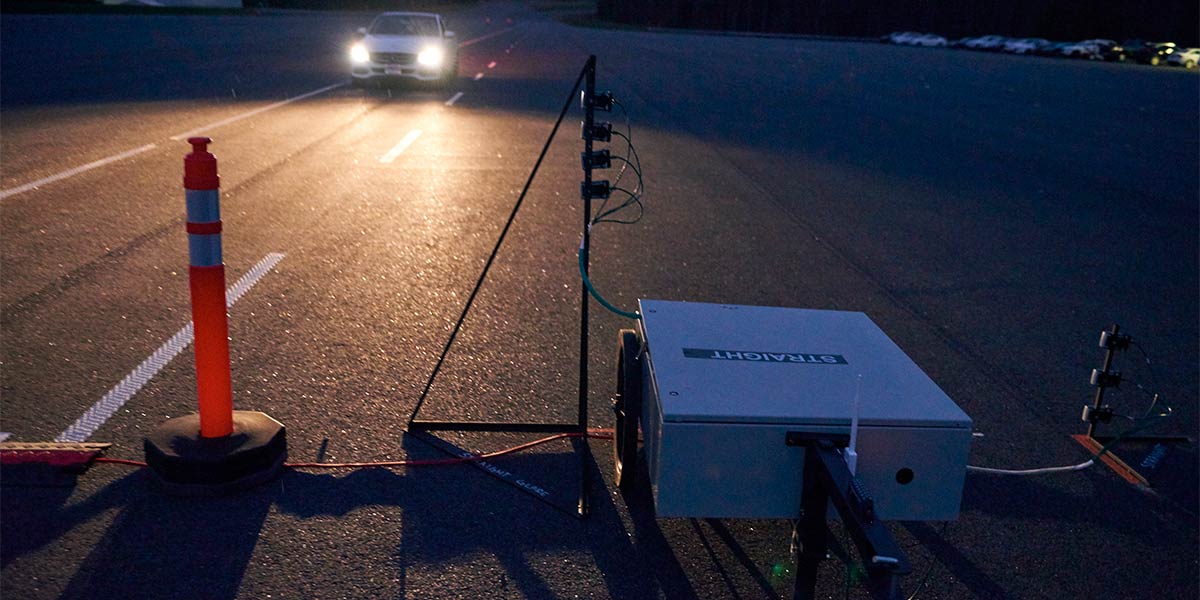Headlights
The headlight evaluation measures the distance over which headlights provide adequate illumination on straightaways and curves. It also checks for glare that headlights may cause for drivers of oncoming vehicles.
When multiple systems are available, vehicles receive separate headlight ratings for each system.

How the test is run
- Vehicles are driven on five approaches — a straightaway, gradual curves to the left and right and sharp curves to the left and right.
- Vehicles are driven on each approach six times, three times with low beams and three times with high beams.
- Engineers measure how far from the vehicle light extends with an intensity of at least 5 lux at 10 inches above the ground. (A full moon on a cloudless night illuminates the ground below to about 1 lux.)
- Glare for drivers of oncoming vehicles is measured from the low beams in each scenario at 3 feet, 7 inches from the ground.
- Headlights are tested as received from the dealer with no adjustments of aim, since few vehicle owners make such adjustments.

How vehicles are evaluated
- Headlight systems receive demerits if their high-beam or low-beam illumination falls short on any of the approaches and if the low beams produce glare for oncoming drivers.
- Illumination over a longer distance is required for the straightaway than for curves and for gradual curves than for sharp curves.
- Low-beam demerits are reduced for vehicles with high-beam assist, a feature that automatically switches between high beams and low beams based on the presence of other vehicles.
Headlight evaluation protocol and technical information
For details on other tests we conduct, visit the About our tests page.